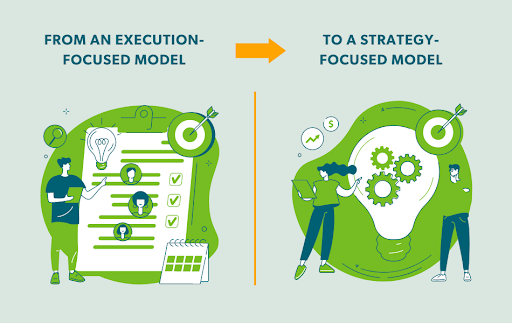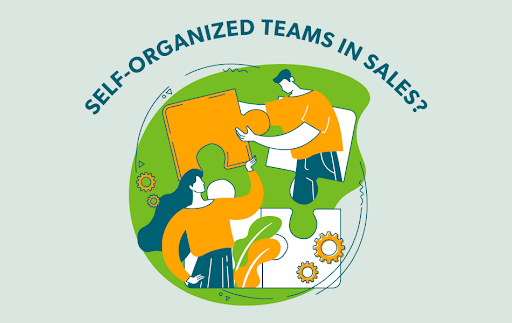Improve your Marketing Ops every week
Subscribe to our blog to get insights sent directly to your inbox.
Confront your process problems head on with a Sherpa by your side.
Explore support options that are tailored to meet you wherever you are on your climb.
Browse our pioneering Agile marketing courses
Learn from the stories of marketers already on the road to process improvement.
Featured Resource

State of Agile Marketing
Learn from 8 years of study on how marketers are increasing their agility.
Download Report
In my 22 years developing iterative methods and 6 helping organizations transform their sales processes with Agile and Lean methodologies, I’ve learned a ton. Above all, though, I’ve learned that sales needs Agile methods more than ever to adapt at the speed that the 21st-century economy demands.
That said, implementing Agile in sales isn’t easy.
From getting incentives right to failing to unlock the power of self-organized teams, there are a lot of potential pitfalls. That’s why I’ve pulled from my experience to share my best advice both for organizations interested in Agile sales and those already implementing it.
Most companies would love a higher-performing sales group that sells bigger deals, faster, resulting in happier and more loyal customers. The clearest way to get there is to organize your sales teams leveraging Agile principles designed to organize knowledge workers in service of complex goals.
This more consultative and collaborative approach helps us distance ourselves from preconceived notions around sales as being transactional at best and confrontational at worst. The third value of the original Agile Manifesto is “customer collaboration over contract negotiation” for good reason, and we see Agile sales as being built on that type of collaboration.
Unfortunately, "Sales," as it is practiced by vendors (and therefore how it’s received by buyers) is often rooted in a relationship of mutual suspicion around motivation. The purchaser wonders if the salesperson has optimized the purchase for their own gain versus the value tendered to the purchasing organization.
In turn, the salesperson enters into the discussion with the assumption that the purchaser may be looking to discount the purchase price to hit a personal goal related to cost savings or negotiation.
In each case, each function wonders if the other is acting out of their own self-interest instead of focusing on the larger exchange of value between two organizations. The resulting negotiation feels more like betting at poker than it does an honest conversation around the resources and constraints of both businesses.
Our approach to Agile sales is designed to address this by focusing more on delivering real value.
Moving from an execution-focused model to one of pure strategy is often jarring for career sellers used to just being given a target and going for it.
I recently heard from a former colleague who was concerned about working in a strategic sales role for exactly this reason. The key to addressing this is creating learning cycles and integrating those learning cycles with the rest of the organization.

By learning cycles, I mean systems for taking the learnings of all of the salespeople on a team in addition to any other customer-focused people, sharing them, and ensuring everyone can use those learnings towards achieving business goals. A sales team will perform better if learning cycles ensure valuable information gets shared so everyone can be more effective.
That’s why reintegrating customer outreach with salespeople is a key driver for using Agile ways of working in sales processes.
Salespeople should be the interface between the organization and customer sentiment. To do this, it’s helpful to have a tight coupling with marketing.
Integrating these functions helps ensure learnings are shared between them and that they operate in sync.
However, what makes that particularly difficult is the extent to which sales is often isolated. It’s treated as an outsourced function with its own conferences, business tools, and practices. Sales teams are often physically isolated in their offices as well.
For sales to get more strategic, they need to integrate more closely with other customer-focused functions and create learning cycles to share information between themselves. But to do this, sales needs to be less isolated within organizations. When salespeople are more tightly integrated into the organization and have support, they’re better able to handle the strategic side of their roles.
What does creating these kinds of learning cycles look like in practice? Learning cycles can take many forms, depending on the scope of concern, what the target of learnings are, who is delivering the learnings or feedback, and the cadence of learning.
For sales teams, learning is a natural motion. Every sale prompts the curious seller to evaluate what went well, and what went wrong. Effective sales teams turn that natural curiosity into team behavior, inspecting sales trends using Agile retrospective techniques on a cadence that makes sense for the team and the offering.
High-performing teams can supercharge this internal learning by reaching out to the best source of external learning: the customer, incorporating the customer’s voice on both won and lost deals.
Sales can also facilitate learning for the rest of the organization. This brings up a concept called “usability doughnuts” employed by Rally, a company offering Agile products and services. Literal doughnuts worked as a kind of bribe to get people from product functions to sit down with customers, listen to their issues, and better understand usability.
Anyone looking to implement Agile in sales has to worry about overcoming the individualistic culture that tends to flourish in this environment. In my mind, overcoming this begins with the type of people you hire.
As Jim Collins said, you need the right people on the bus and the wrong people off the bus.
You need to hire people who are oriented around customer success and able to listen to early-stage feedback. If you’ve hired the wrong people, then proper communal and cooperative sales models will vote those people off the island.
This creates a natural area of concern when hiring. Candidates should be hired based on their ability to not only close deals and be good producers, but also work in a teaming environment where that team can include other sellers, adjacent functions, and even the company at large.
But beyond hiring, using incentives and creating self-organizing teams will help create a more collaborative sales environment.
You still have the reality that sellers tend to be autonomous and highly individual, so you want to incentivize them to work together towards those bigger opportunities. But that doesn’t work if everyone is compensated based on their individual achievement metrics.
Many will argue that sellers need individual compensation as if they’re coin-operated machines. If a sales organization hires individuals that are driven solely by compensation, a frequent outcome is that the rest of the organization needs to compensate for the behavior of your salespeople.
Think of this as the sales version of technical debt, a kind of “relationship debt”. Hiring people with the right mindset and orientation, and compensating them in a manner that best befits the goals of the organization, limits the accumulation of irrecoverable relationship debt with customers.
If you can change the compensation structure so it’s one team and one number, that works as kind of a cure-all for seller-level resentment and poor coordination/cooperation. If you’re all working towards the same number, there’s much more of that coordination and cooperation, especially in supporting those bigger deals.
Ultimately, if 20% of your customers will get you 80% of your revenue, and those big customers benefit from long time cycles, relationship building, etc. then this model works well.
As organizations pursue those kinds of opportunities, they tend to gravitate towards strategic account relationships and opportunities. Those kinds of relationships benefit from longer and more consistent relationships rather than getting passed from salesperson to salesperson.

The concept of self-organizing teams is a kind of nirvana for Agile, and each organization will need to find the balance between how much autonomy they want to give to sales teams and how much they will want to put in reserve.
Self-organizing teams, to some extent, should be able to decide who works on what part of the revenue goal. This can be related to how territories are split up, how accounts are apportioned, and how duties are split among the teams supporting the revenue goal. Doing so allows teams to pull on individual strengths and interests, and also creates a spirit of cooperation, especially if the compensation model is structured to support the team.
You want to let sales do its thing, but also optimize around cooperation and integration with the rest of the organization.
But do you want sales to be just about revenue or to also function as a learning center for the entire organization?
Whichever direction you decide to go in, you need to accept the reality that compensation drives behavior. The people signing the paychecks will have the ultimate authority.
Just be aware that the imposition of structure or a compensation model that disincentivizes teamwork and cooperation can create arbitrary negative outcomes, like inefficiencies and resentments, especially as companies grow and sellers perceive inequalities or unfairness with territory boundaries.
In my experience, there's a sweet spot between guidance from above and full autonomy at the team level.
Оne of the best predictors for sales success is having leadership that understands that sales is one of the best channels for market feedback, which can be unlocked through Agile principles and practices.
To apply these new practices to the traditional sales process, leaders have a responsibility to align certain factors, like removing barriers between teams.
The last thing you want is friction between sales and product or engineering. A typical antipattern is a sales group that won’t collaborate with the product team because they don’t trust them to maintain client relationships, and an engineering group that discounts the voice of sales because “what do they know, they are just selling whatever we give them.”
Leaders can also position sales to be less of a function that feels like an outsourced part of the company, and more of one which is deeply integrated.
When these criteria fall into place, sales is incentivized to work in autonomous self-organizing teams with common goals and share learnings through robust learning systems and feedback loops, both external and internal.
That’s the ultimate goal and the path towards unlocking all the value Agile sales has to offer.

Bob Ternes is Director of Client Delivery at Applied Frameworks. He has over 22 years of experience in developing iterative methods and helping organizations transform their sales processes with Agile and Lean methodologies.
Subscribe to our blog to get insights sent directly to your inbox.
Subscribe to our blog to get insights sent directly to your inbox.